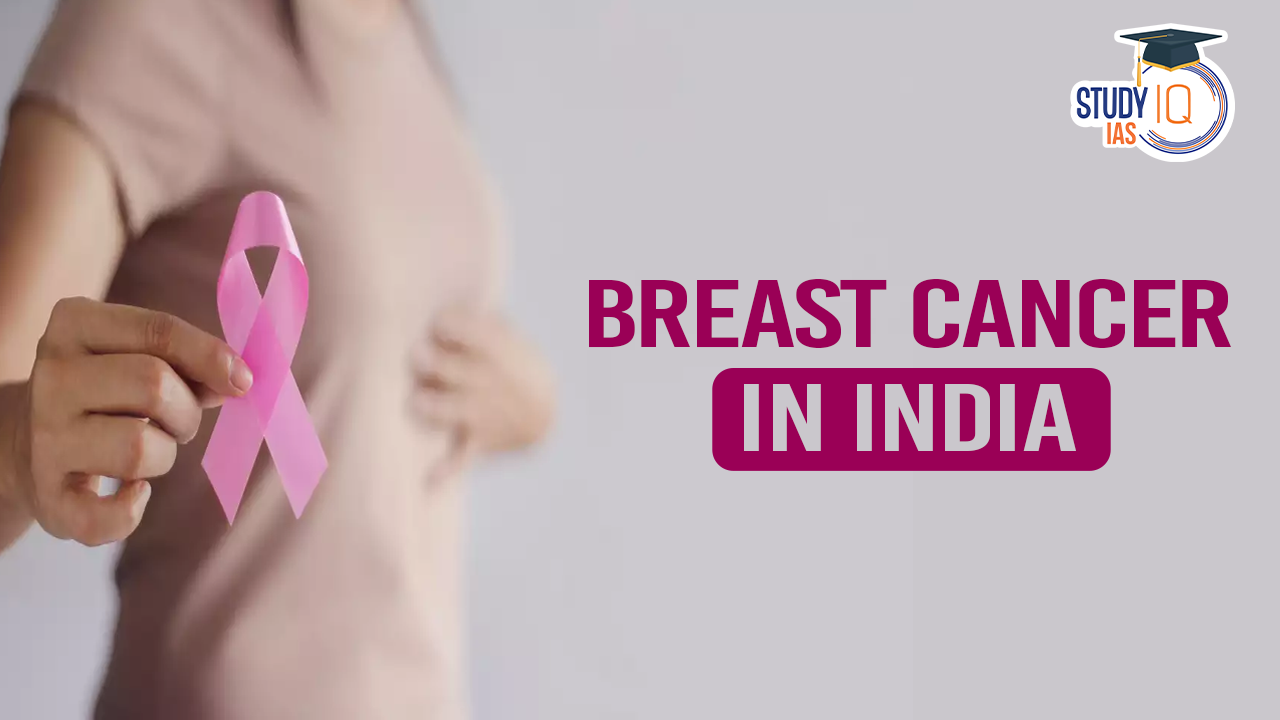Table of Contents
Breast cancer is one of the leading causes of cancer deaths among women in India, accounting for 27% of all cancer cases. The country is seeing a rise in breast cancer cases, especially in urban areas like Mumbai, New Delhi, Kolkata, and Chennai.
Breast cancer in India
Breast cancer in India is a growing concern, particularly in urban areas. Limited awareness and knowledge lead to late detection, resulting in high mortality rates. Risk factors include age, early menarche, and delayed menopause. Symptoms include lumps, changes in breast shape and size, and pain. Early detection through screenings and self-exams is crucial. Education and advocacy are essential to promote healthy habits and timely treatment, improving outcomes for Indian women affected by breast cancer.
| Data Point | Statistic |
|---|---|
| Proportion of All Female Cancers (2022) | 28.2% |
| Estimated Cases (2022) | 216,108 |
| Leading Cause of Cancer Deaths | Yes |
| Age-Standardized Incidence Rate Increase (1990-2016) | 39.1% |
| Regional Burden | Highest in Northern and Southern regions |
| Proportion of Deaths (2022) | 13.7% |
| New Cases (2018) | 162,468 |
| Proportion of New Cancers (2018) | 27.7% |
Click to Read: Breast Cancer Awareness Month 2024
Why Breast Cancer Cases are Rising Among Younger Women?
-
Genetic factors and family history
-
Lifestyle changes
-
Obesity
-
Sedentary lifestyle
-
Unhealthy eating habits
-
Alcohol consumption
-
Stress
-
Air pollution
-
Delayed childbirth
-
Infertility treatment
-
Late menopause
-
Early menopause
-
Lack of physical activity
-
Exposure to environmental toxins for a longer period
-
Inadequate breastfeeding
-
Hormone therapy
Breast Cancer Survival in India
-
The five-year survival rate for breast cancer patients in India is around 60 to 66.4 percent.
-
The five-year age-standardised relative survival rate was 66.4 percent, with Mizoram, Ahmedabad-Urban, Kollam, and Thiruvananthapuram showing higher survival rates than the national average.
-
Patients diagnosed at a local stage had a 4.4 times greater chance of five-year survival compared to those with distant-stage cancer.
-
Individuals over 65 years had a 16 percent lower chance of survival than those aged 15-39.
-
The survival rate, in cases where the diagnosis occurred at an early stage, maybe as high as 80-90 percent within five years.
-
The five year overall survival rate of breast cancer in India ranged from 40-62 percent.
Breast Cancer Prevention in India
-
Maintain a healthy weight through a nutritious diet and physical activity
-
Avoid smoking and limit alcohol consumption
-
Breastfeed, especially for more than a year
-
Get genetic counseling and screening to determine DNA mutations
-
Perform self-examinations to detect any abnormalities in the breasts
-
Get regular clinical check-ups, especially after the age of 40
-
Get a mammogram after the age of 50
-
Avoid pollution and environmental toxins
-
Manage stress levels through stress management techniques
-
Get educated on breast cancer and its effects
Breast Cancer Treatment in India
Breast cancer treatment in India involves a multi-disciplinary approach, leveraging advancements in medical technology and improved healthcare infrastructure. Treatment options are tailored to the type, stage, and biological characteristics of the cancer, as well as the patient’s overall health and preferences.
Treatment Options
- Surgery
- Lumpectomy: Removal of the tumor and some surrounding tissue.
- Mastectomy: Partial or complete removal of one or both breasts.
- Reconstructive Surgery: Breast reconstruction post-mastectomy.
- Radiation Therapy
- Destroys remaining cancer cells after surgery.
- Techniques: external beam radiation and brachytherapy.
- Chemotherapy
- Kills cancer cells, used pre-surgery (neoadjuvant) or post-surgery (adjuvant).
- Administered intravenously or orally.
- Hormone Therapy
- For hormone receptor-positive cancers.
- Medications: tamoxifen and aromatase inhibitors.
- Targeted Therapy
- Targets specific molecules like HER2.
- Drug example: trastuzumab (Herceptin).
- Immunotherapy
- Enhances immune response against cancer cells.
- Example: pembrolizumab for certain cases.
Challenges
- Access to Care
- Urban-rural disparities in healthcare facilities.
- Limited advanced diagnostic and treatment options in rural areas.
- Financial Constraints
- High treatment costs.
- Limited insurance coverage.
- Awareness and Education
- Lack of awareness and education about breast cancer and early detection.
- Cultural stigma affecting timely medical help.
Government Initiative on Breast Cancer in India
-
“Population-based screening of common NCDs” by The Government of India
-
The initiative provides preventive, curative and referral services for non-communicable diseases like diabetes, hypertension, and the three most common types of cancer
-
The initiative offers health care services at the community and primary levels
-
The initiative prioritizes populations in districts with poor socio-economic indicators
-
The initiative aims to reach 500 million adults by 2022
-
The initiative has covered 64 million individuals above the age of 30 years
-
The initiative has referred about 4.3 million women for cervical cancer screening
-
Prime Minister Narendra Modi launched the PBS portal to track the health status of people with a high risk of NCDs
Moreover, NGOs and other organizations have also taken various initiatives to prevent breast cancer: -
Tata Trusts launched India’s largest breast cancer screening drive
-
Xiaomi partnered with Yuvraj Singh’s Foundation to launch a breast cancer screening initiative
-
WHO’s Global Breast Cancer Initiative (GBCI) was established to reduce breast cancer by 2.5% per year
-
Reflections on Evolution of Breast Cancer Care in India Over the Past 4 decades


 India’s Deep Sea Technology, Need and ...
India’s Deep Sea Technology, Need and ...
 Nag Anti-Tank Missile System (NAMIS)
Nag Anti-Tank Missile System (NAMIS)
 ESA’s Gaia Mission, Scientific Instrum...
ESA’s Gaia Mission, Scientific Instrum...





















